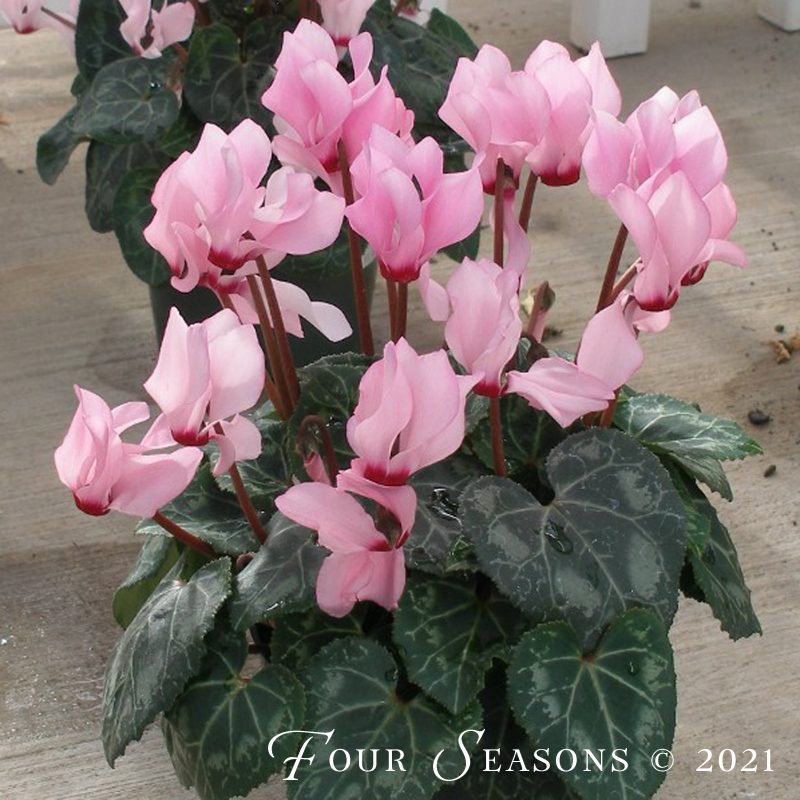There are a group of plants I call the “grandmother plants.” They’re the ones that you probably remember seeing on your grandmother’s windowsill when you were growing up. It seems like every grandmother had at least one African violet, snake plant, or Christmas cactus but there’s another one I include in that group, though it’s not as popular, and that one is cyclamen.
Cyclamen come in a variety of colors and sizes and generally bloom from December to April. Miniatures are particularly cute and suited for windowsills or desk tops. Regular cyclamen are larger and make great houseplants during the winter months because their bright colors and sometimes soft scent makes them popular favorites around the holidays. They are available as both tropical houseplants and hardy cyclamen which can be planted in the garden but most of the ones that you see around the holidays are of the tropical variety.
They are cool weather lovers and prefer daytime temperatures that don’t go above about 65 degrees and night time temps of around 50 degrees so they’ll thrive in a cool house. Although the temperatures are perfect in our area, the problem here is that they prefer a moist, humid environment in order to thrive and winter air here is often dry. The challenge comes in keeping them happy and blooming.
Cyclamen are often misunderstood because they’re a little different than most plants. Initially started from seed, cyclamen form a corm which is similar to a bulb. Keeping that corm moist, but not overwatering is one of the secrets to success with this plant. Too much water can rot the corm and kill them.
Taking care of these lovely little bloomers through the season isn’t really all that difficult though. When you bring your plant home, place it in a spot that is cool but has bright light. Temperature is critical for success with this plant so do not place it in a south facing window, for example, where it will be in the sun all day.
Since cyclamen are so sensitive to water, make sure it is in soil that drains well so that water passes through and doesn’t rot the plant. Water when the top of the soil is dry to the touch but don’t overwater. You may need to water daily in our dry climate, especially if you run a wood stove during the winter months as a heat source. Misting is also a good option as you want to be sure to keep it moist, but don’t let it dry out. Remember my saying? Plants are like people- neither like wet feet, and in this case, wet feet will rot your plant.
With some care, cyclamen should bloom from December until April. As flowers, stems and leaves begin to die off, remove them from the plant. New ones should soon replace them.
Around April your plant will die back and begin to go dormant and the plant will appear as if it’s dying. Don’t worry. Simply reduce the water and keep it in a cooler, darker place and let it sit for a couple of months. In July or August, you should see new leaves begin to form. At that time you can begin watering again and transplant it into a pot using a well draining potting mix and resume your normal routine care. Your plant will appreciate a good feeding using houseplant fertilizer applied at half strength.
Cyclamen are, in my opinion, some of the most interesting and unusual plants of the winter season. Brightly colored in shades of white, red, and pink, they’re a wonderful gift or addition to any home this holiday season, not just your grandmothers!

